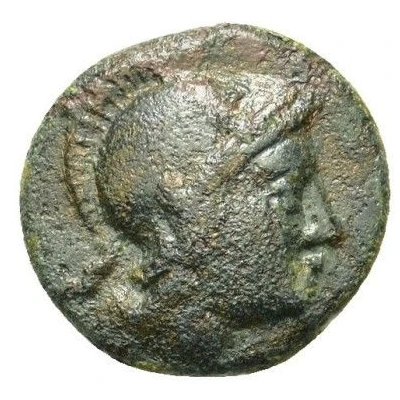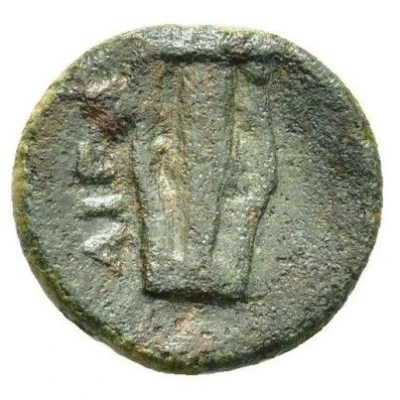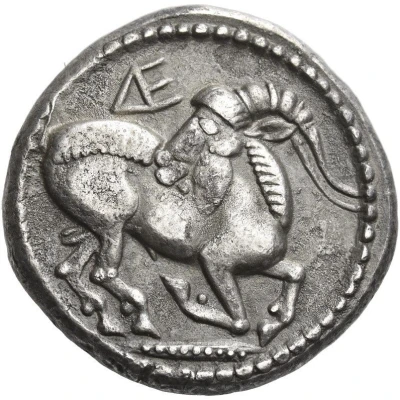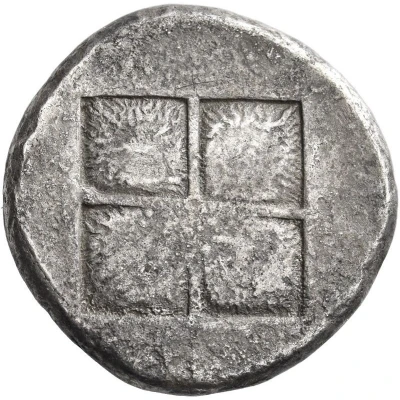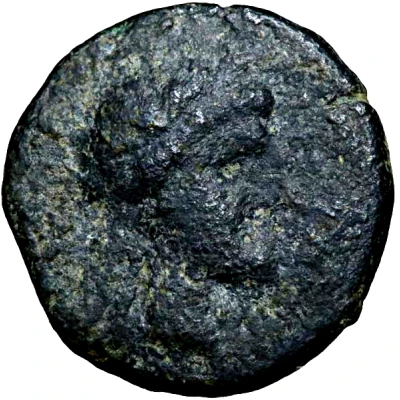
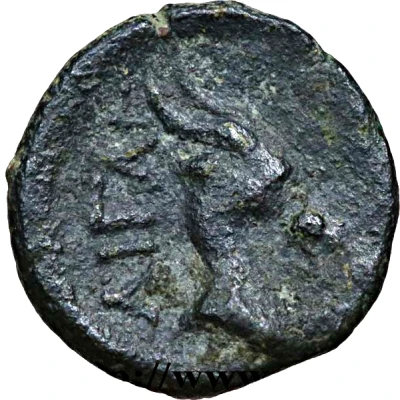

© CGB
Æ 9 200 BC - 100 BC
| Bronze | 0.88 g | 9 mm |
| Issuer | Aegae (Aeolis) |
|---|---|
| Type | Standard circulation coin |
| Years | 200 BC - 100 BC |
| Value | Chalkon (1⁄48) |
| Currency | Drachm |
| Composition | Bronze |
| Weight | 0.88 g |
| Diameter | 9 mm |
| Shape | Round (irregular) |
| Technique | Hammered |
| Orientation | Medal alignment ↑↑ |
| Demonetized | Yes |
| Updated | 2024-10-09 |
| Numista | N#155643 |
|---|---|
| Rarity index | 87% |
Reverse
Forepart of goat facing right.
Script: Greek
Lettering: ΑΙΓΑΕ
Translation: AIGAI
Comment
Aegae appears in history for coinage in the 3rd century BC. The city was located at the foot of the mountains inland on the river Pythikos. The remains of the city were excavated in the 19th century and temples, a theater, a stadium, a market, a bouleuterion and a necropolis were discovered. The city although mentioned by Herodotus (I, 149) never had a political or economic role. The city does not seem to have belonged to the League of Delos. It is still named by Polybius. The city was destroyed by an earthquake in 17 AD and restored by Tiberius.Interesting fact
One interesting fact about this coin is that it features a unique blend of Greek and Persian influences in its design. The obverse side of the coin depicts a bearded king, likely King Attis, who ruled Aegae during the 2nd century BC. The reverse side shows a stylized lion, which was a common motif in ancient Persian art. This blending of cultural influences reflects the complex history of the region, where Greek city-states and Persian empires interacted and traded with each other.
